-
 Bitcoin
Bitcoin $83,301.7640
-2.11% -
 Ethereum
Ethereum $1,799.9842
-4.25% -
 Tether USDt
Tether USDt $0.9999
0.00% -
 XRP
XRP $2.0278
-4.59% -
 BNB
BNB $596.2228
-1.03% -
 USDC
USDC $1.0001
0.01% -
 Solana
Solana $116.8645
-7.35% -
 Dogecoin
Dogecoin $0.1617
-6.43% -
 Cardano
Cardano $0.6450
-5.42% -
 TRON
TRON $0.2321
-2.68% -
 Toncoin
Toncoin $3.6664
-9.62% -
 UNUS SED LEO
UNUS SED LEO $9.4145
0.16% -
 Chainlink
Chainlink $12.8328
-5.91% -
 Stellar
Stellar $0.2589
-3.37% -
 Avalanche
Avalanche $18.1600
-6.54% -
 Sui
Sui $2.2723
-8.51% -
 Shiba Inu
Shiba Inu $0.0...01214
-1.89% -
 Hedera
Hedera $0.1611
-4.12% -
 Litecoin
Litecoin $82.9489
0.17% -
 Polkadot
Polkadot $3.9725
-3.23% -
 MANTRA
MANTRA $6.2949
0.51% -
 Bitcoin Cash
Bitcoin Cash $302.6917
-1.17% -
 Bitget Token
Bitget Token $4.5396
-1.25% -
 Dai
Dai $1.0000
0.00% -
 Ethena USDe
Ethena USDe $0.9998
-0.01% -
 Pi
Pi $0.6249
-7.33% -
 Monero
Monero $213.0395
-1.33% -
 Hyperliquid
Hyperliquid $11.5526
-14.44% -
 Uniswap
Uniswap $5.9462
-2.98% -
 Aptos
Aptos $5.2007
-2.20%
How do blockchain browsers view transaction records?
Blockchain explorers allow users to view transaction details using a TXID, analyze address activity, and understand network fees, but they have limitations with off-chain data.
Apr 02, 2025 at 11:21 am
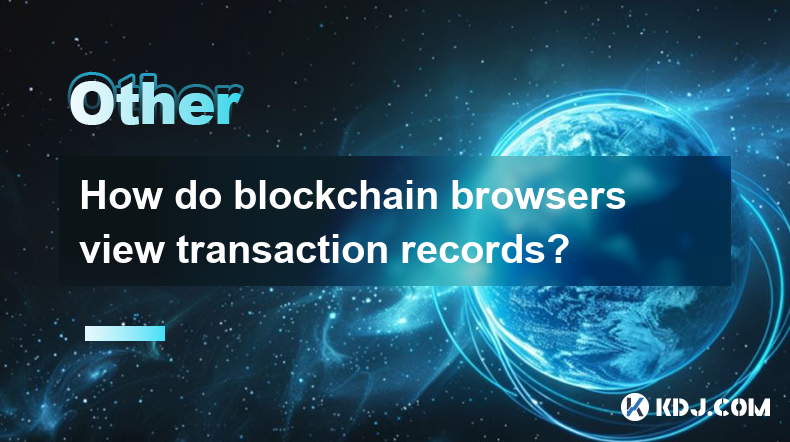
Understanding Blockchain Explorers
Blockchain browsers, often called blockchain explorers, are essential tools for anyone interacting with a blockchain network. They provide a user-friendly interface to view and analyze on-chain data, including transaction records. These explorers don't directly access the blockchain itself but instead query and interpret data from full nodes which maintain a complete copy of the blockchain. This allows users to access information without needing to run a full node themselves, saving significant resources.
Accessing Transaction Records
The primary function of a blockchain explorer is to display transaction records. To view a specific transaction, you typically need its transaction hash (TXID). This unique identifier acts as a key to locate the transaction within the blockchain's vast dataset. Many explorers offer search bars where you can paste the TXID to retrieve detailed information about the transaction. The level of detail varies across explorers but generally includes sender and receiver addresses, the amount transferred, timestamps, and transaction fees.
Navigating the Explorer Interface
Most blockchain explorers share a similar structure. They usually feature a search bar prominently displayed, allowing users to search by TXID, address, or block number. Beyond the search functionality, explorers often provide tools to explore the blockchain's structure. This includes browsing blocks, viewing recent transactions, and analyzing network statistics like the number of unconfirmed transactions. Understanding these features is crucial for efficiently navigating and extracting information.
Different Blockchains, Different Explorers
It's important to remember that each blockchain has its own dedicated explorer. For example, etherscan.io is a popular explorer for the Ethereum blockchain, while blockchain.com is commonly used for Bitcoin. Using the wrong explorer will result in failed searches. Always ensure you're using the explorer specific to the blockchain you're investigating.
Viewing Transaction Details: A Step-by-Step Guide
Let's assume you have a transaction hash. Here's how you'd typically view the transaction details using a blockchain explorer:
- Find the Correct Explorer: Identify the blockchain your transaction belongs to (e.g., Bitcoin, Ethereum, Litecoin). Then, locate the corresponding blockchain explorer.
- Locate the Search Bar: Most explorers prominently feature a search bar. This is usually located near the top of the page.
- Paste the TXID: Copy your transaction hash (TXID) and paste it into the search bar.
- Initiate the Search: Press Enter or click the search button.
- Review Transaction Details: The explorer will display the transaction details. This typically includes the sender and receiver addresses, the amount of cryptocurrency transferred, the transaction fee, the timestamp, and sometimes even a link to the block containing the transaction.
Understanding Transaction Confirmation
A crucial aspect of viewing transaction records is understanding the concept of confirmation. A transaction is considered confirmed only after it has been included in a block and that block has been added to the blockchain. The number of confirmations required varies depending on the blockchain and its security parameters. Explorers usually indicate the number of confirmations a transaction has received. Higher confirmation numbers generally indicate a lower risk of reversal.
Exploring Beyond Transaction Records
Blockchain explorers offer functionalities beyond just viewing transaction records. Many allow you to explore the entire blockchain structure. This includes viewing the block chain itself, investigating specific blocks, viewing address balances and transaction history associated with a particular address. These features provide a deeper understanding of the blockchain's activity and the flow of cryptocurrency.
Analyzing Address Activity
Many explorers allow you to search for information using an address instead of a TXID. Entering an address will typically display a list of all transactions associated with that address, both incoming and outgoing. This is useful for tracking the movement of funds and understanding the history of an address. However, be mindful of privacy concerns when analyzing addresses.
Interpreting Transaction Fees
Transaction fees, also known as gas fees on some blockchains, are crucial for network operation. These fees incentivize miners or validators to process and include transactions in blocks. Blockchain explorers usually display the transaction fee paid for each transaction. Analyzing transaction fees can provide insights into network congestion and the overall cost of using the blockchain. Higher fees often indicate higher network congestion.
Accessing Block Information
Beyond individual transactions, blockchain explorers also allow you to access information about individual blocks. Each block contains a set of transactions, a timestamp, and other metadata. Exploring block information allows you to view the transactions included in a specific block and understand the overall state of the blockchain at a particular point in time.
Understanding Blockchain Explorer Limitations
While blockchain explorers are powerful tools, they have limitations. They primarily display on-chain data, meaning they only show transactions that have been recorded on the blockchain. Off-chain transactions, which occur outside the blockchain, will not be visible. Furthermore, the level of detail provided can vary between explorers.
Frequently Asked Questions
Q: What is a blockchain explorer?
A: A blockchain explorer is a website or application that allows users to view and analyze data from a blockchain network, including transaction records, block information, and address activity.
Q: What is a transaction hash (TXID)?
A: A transaction hash (TXID) is a unique identifier for a specific transaction on a blockchain. It's used to locate and retrieve detailed information about the transaction.
Q: How many confirmations are needed for a transaction to be considered secure?
A: The number of confirmations required varies depending on the specific blockchain and its security parameters. Generally, a higher number of confirmations indicates a lower risk of reversal.
Q: Can I view transactions without knowing the TXID?
A: Yes, many explorers allow you to search using an address. This will show all transactions associated with that address. You can also search by block number.
Q: Are all blockchain explorers the same?
A: No, each blockchain typically has its own dedicated explorer. For example, etherscan.io is for Ethereum, while blockchain.com is often used for Bitcoin. Using the incorrect explorer will not yield results.
Disclaimer:info@kdj.com
The information provided is not trading advice. kdj.com does not assume any responsibility for any investments made based on the information provided in this article. Cryptocurrencies are highly volatile and it is highly recommended that you invest with caution after thorough research!
If you believe that the content used on this website infringes your copyright, please contact us immediately (info@kdj.com) and we will delete it promptly.
- Sentient Launches Open-Source Deep Search (ODS), a New Era for Artificial Intelligence
- 2025-04-03 18:45:13
- Qubetics ($TICS), ImmutableX, and Filecoin Are Top 3 Cryptos to Buy in 2025
- 2025-04-03 18:45:13
- Bitcoin Market Momentum Stalled After US President Donald Trump Announced New Tariffs
- 2025-04-03 18:40:12
- Game Development Firm Enish Buys the Dip, Investing ¥100M in Bitcoin
- 2025-04-03 18:40:12
- The Memecoin Market Continues to Draw In Capital from Both Retail and Institutional Investors
- 2025-04-03 18:35:13
- The Erstwhile-Popular Memecoin, $PWEASE, Finds Its Market Cap and Holder Base Sinking
- 2025-04-03 18:35:13
Related knowledge
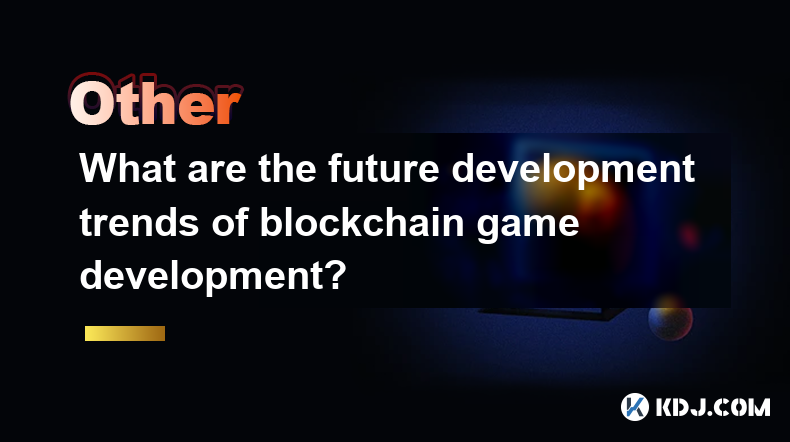
What are the future development trends of blockchain game development?
Apr 03,2025 at 05:00am
Blockchain technology has revolutionized various industries, and gaming is no exception. As we look to the future, several trends are set to shape the development of blockchain games. These trends not only promise to enhance the gaming experience but also to integrate blockchain technology more seamlessly into the gaming ecosystem. Let's explore these t...
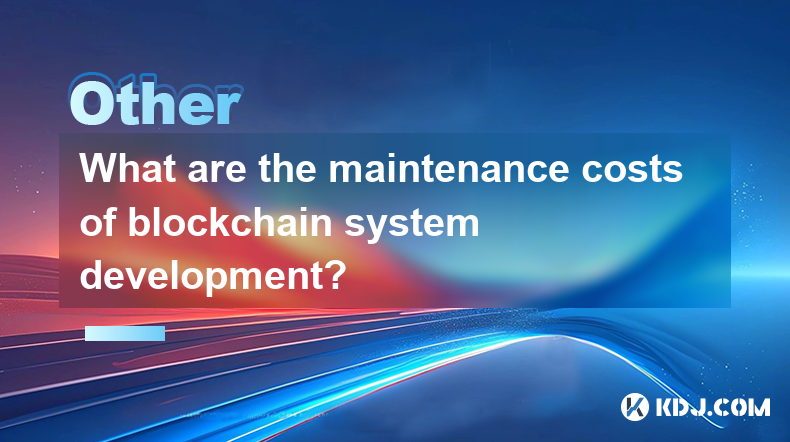
What are the maintenance costs of blockchain system development?
Apr 03,2025 at 06:07pm
The maintenance costs of blockchain system development are multifaceted and depend on various factors. These costs can include technical maintenance, security updates, infrastructure expenses, and personnel costs. Understanding these elements is crucial for anyone planning to develop or maintain a blockchain system. Technical MaintenanceTechnical mainte...
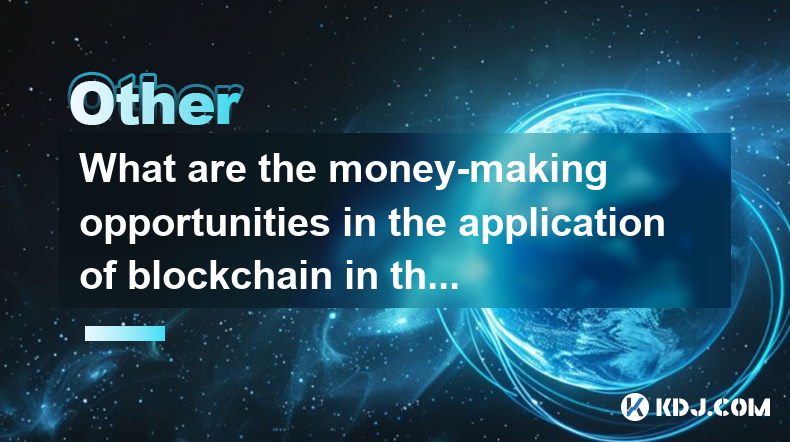
What are the money-making opportunities in the application of blockchain in the medical industry?
Apr 03,2025 at 03:35am
The integration of blockchain technology into the medical industry presents a myriad of money-making opportunities that can revolutionize healthcare systems. Blockchain's inherent characteristics, such as transparency, security, and immutability, make it an ideal solution for various medical applications. By leveraging blockchain, companies can develop ...
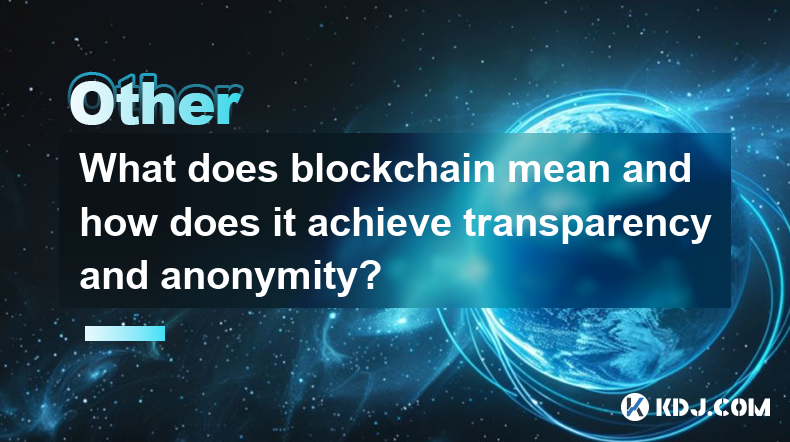
What does blockchain mean and how does it achieve transparency and anonymity?
Apr 03,2025 at 11:28am
Blockchain technology is a decentralized, distributed ledger that records transactions across numerous computers. It ensures that once data is recorded, it cannot be altered retroactively without the alteration of all subsequent blocks and the consensus of the network. This technology underpins cryptocurrencies like Bitcoin and Ethereum, providing a sec...
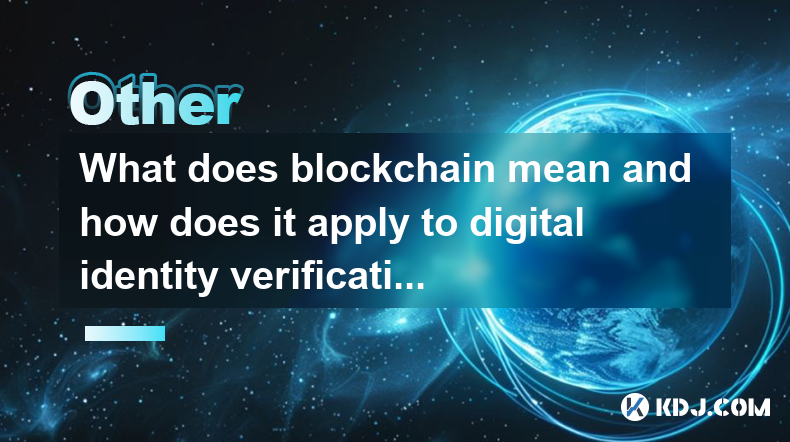
What does blockchain mean and how does it apply to digital identity verification?
Apr 03,2025 at 02:21am
Blockchain technology, at its core, is a decentralized and distributed digital ledger used to record transactions across numerous computers. This ensures that the recorded data cannot be altered retroactively without the alteration of all subsequent blocks and the consensus of the network. The concept of blockchain was initially devised for the digital ...
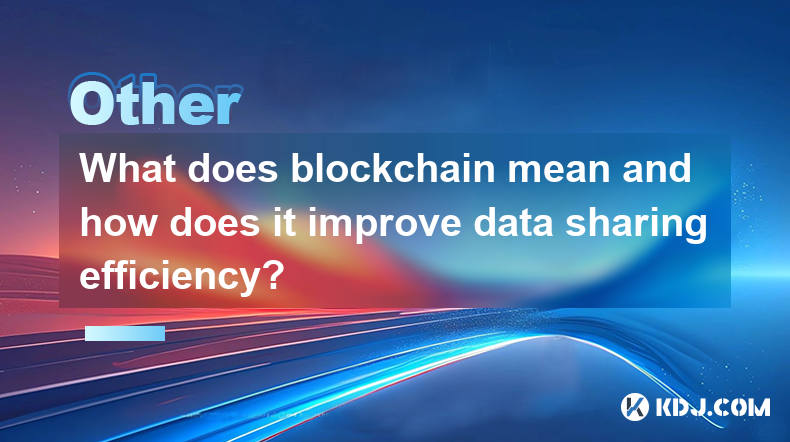
What does blockchain mean and how does it improve data sharing efficiency?
Apr 03,2025 at 03:15pm
Blockchain is a decentralized and distributed digital ledger technology that records transactions across numerous computers. This technology ensures that once data is recorded, it cannot be altered retroactively without the alteration of all subsequent blocks and the consensus of the network. This characteristic makes blockchain highly secure and transp...

What are the future development trends of blockchain game development?
Apr 03,2025 at 05:00am
Blockchain technology has revolutionized various industries, and gaming is no exception. As we look to the future, several trends are set to shape the development of blockchain games. These trends not only promise to enhance the gaming experience but also to integrate blockchain technology more seamlessly into the gaming ecosystem. Let's explore these t...

What are the maintenance costs of blockchain system development?
Apr 03,2025 at 06:07pm
The maintenance costs of blockchain system development are multifaceted and depend on various factors. These costs can include technical maintenance, security updates, infrastructure expenses, and personnel costs. Understanding these elements is crucial for anyone planning to develop or maintain a blockchain system. Technical MaintenanceTechnical mainte...

What are the money-making opportunities in the application of blockchain in the medical industry?
Apr 03,2025 at 03:35am
The integration of blockchain technology into the medical industry presents a myriad of money-making opportunities that can revolutionize healthcare systems. Blockchain's inherent characteristics, such as transparency, security, and immutability, make it an ideal solution for various medical applications. By leveraging blockchain, companies can develop ...

What does blockchain mean and how does it achieve transparency and anonymity?
Apr 03,2025 at 11:28am
Blockchain technology is a decentralized, distributed ledger that records transactions across numerous computers. It ensures that once data is recorded, it cannot be altered retroactively without the alteration of all subsequent blocks and the consensus of the network. This technology underpins cryptocurrencies like Bitcoin and Ethereum, providing a sec...

What does blockchain mean and how does it apply to digital identity verification?
Apr 03,2025 at 02:21am
Blockchain technology, at its core, is a decentralized and distributed digital ledger used to record transactions across numerous computers. This ensures that the recorded data cannot be altered retroactively without the alteration of all subsequent blocks and the consensus of the network. The concept of blockchain was initially devised for the digital ...

What does blockchain mean and how does it improve data sharing efficiency?
Apr 03,2025 at 03:15pm
Blockchain is a decentralized and distributed digital ledger technology that records transactions across numerous computers. This technology ensures that once data is recorded, it cannot be altered retroactively without the alteration of all subsequent blocks and the consensus of the network. This characteristic makes blockchain highly secure and transp...
See all articles























































































